Kodak’s Killer Camera – the Zi8
Is there finally a challenge to the Flip? And is it coming from Big Yellow? Never thought I’d say this out loud again, but I’m loving something from Kodak. (For the record, the last time I said that was when I was still shooting Tri-X, which was … um … 1994?)
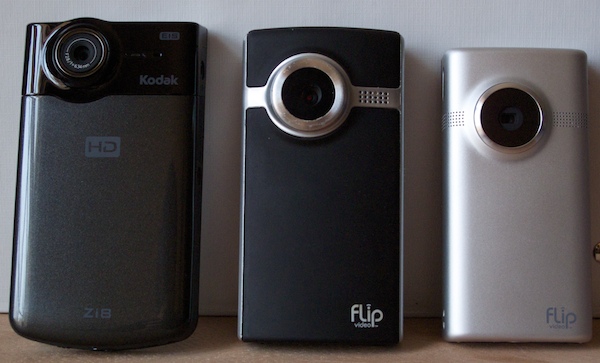
Several years ago, when a Flip Ultra video camera showed up on my desk, I got pretty excited. Was this the teaching tool that would change what I did? Was this the tool that would simplify news video for the web? My enthusiasm was pretty strong, strong enough to have my college start buying them.
Since then, the Flip has been updated, adding a smaller version and high definition video, all while retaining the simplicity of the original. Completely self contained, it allows users to concentrate on the story. But it didn’t really evolve. The quality got better, but the feature set stayed true to its roots – it was a pocket video camera, nothing more, nothing less. (With the FlipShare software, you can now easily pull frame grabs from the video, but that’s dependent on having good frames to grab.)
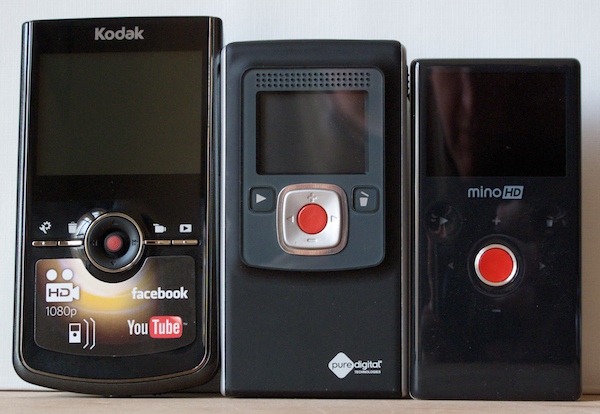
The internal storage was all there was, no way to carry more storage with you for long shoots. And the internal, rechargeable, now-swapable battery on the Mino and Mino HD leave me nervous – the replaceable AA batteries of the Ultra make me a little more comfortable.
The one feature I really, really wanted, though, was a microphone jack. That simple little addition … wow, game changer. More control over the audio means better audio means less frustration amongst viewers. And, really, how hard could it be?
A few competitors to the Flip cameras have shown up, but last year Kodak – KODAK – introduced what I think is the Flip killer. (You have no idea how badly I want to write something about the Flip being a flop …)
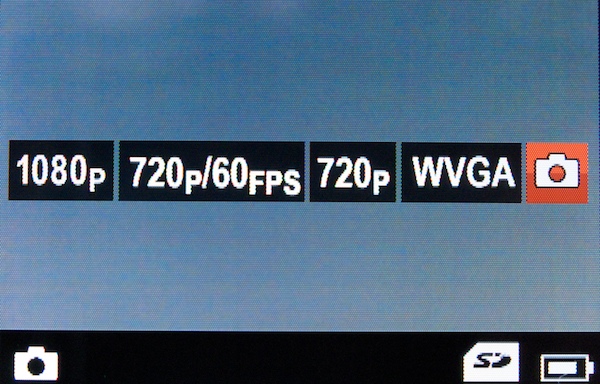
The Zi8 is a little wider than the Flip Ultra, a little taller and thinner. It does video at four different resolutions (1080p, 720p at 60 frames per second, 720p at 30 frames per second and WVGA). There’s image stabilization to help even out your video, too. It has a built in USB port to connect with. On the surface, it’s pretty similar to the Flips.
But then you look closer and there’s more … it will take 5 MP still photos, letting you carry one tool instead of two. There’s a rechargeable battery, but it’s removable so you can carry a spare. There’s a little switch on top of the camera to put the lens into a macro mode. There’s an SD card slot on the side so you can use multiple cards. It has HDMI and analog video/audio outputs.
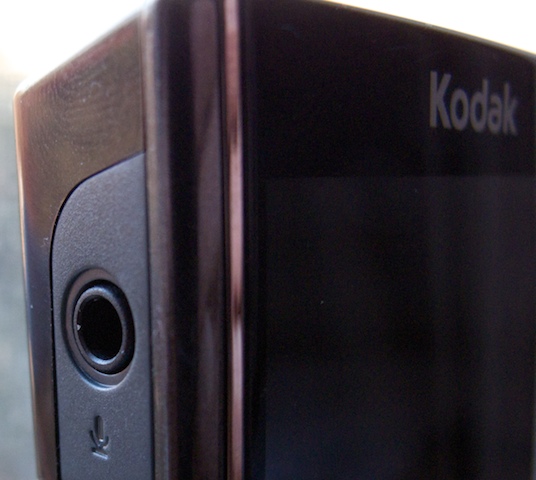
And then you see it – there’s a 1/8 inch microphone jack on the side. And – as if that wasn’t enough to make you dance a little – in the settings menu there’s an audio level control with a simple meter.
Kodak loaned me one of the cameras in mid-December and I’ve been carrying it with me constantly. The video quality easily matches the Flips. The still photos are good enough for web use, I’m not sure I’d want to run them in a magazine anytime soon. The ability to flip the lens into a macro mode is great for doing detail cutaways for videos.
And the mic jack … it’s just such a common sense thing to add and makes life so much easier. I did a little exit-interview video with my students and plugged in a wireless lav mic and the results were great.
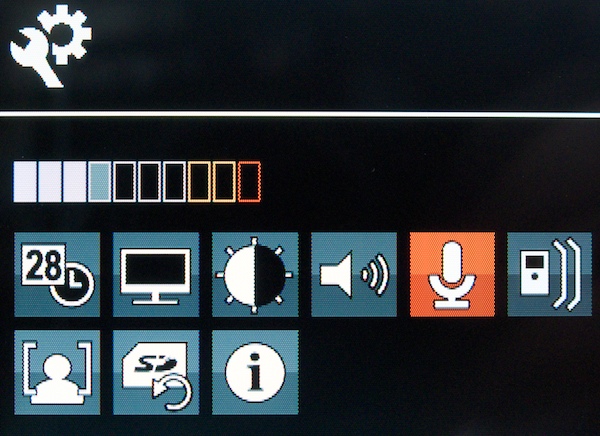
Are there down sides? Yes – the tripod thread on the bottom appears to be plastic and I almost cross-theaded it once. While there’s face recognition technology that helps keep the exposure correct on people, it’s a fixed focus lens that seems to be at it’s optimal sharpness from five feet to infinity. As a journalist’s tool, that’s going to mean shooting simple mug shots pretty loose and then cropping them. It’s not a killer, but it means you have to be a lot more careful with backgrounds to get mug shots to work.
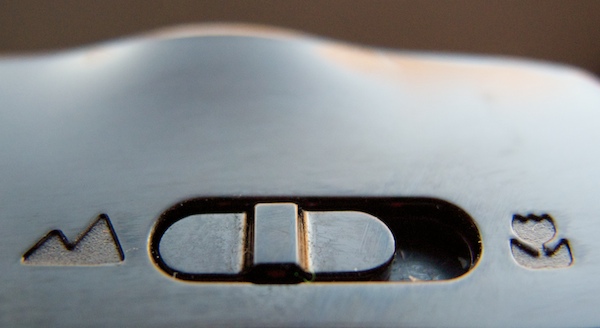
As with most pocket video cameras, the chip is small so the focal length of the lens is short (6.34 mm), which means distortion is going to be a problem. Manageable, but it’s definitely there.
So what do I think? Let me put it this way – I’ve written a course proposal for a one-credit digital literacy course, required of all journalism majors. I’m going to modify it and make the Zi8 a required item for the class. So far, it’s the only tool that allows you to do still photos and video simply and let you control the audio at a significant level. With a little work in an editing program, you can even pull the audio out so this becomes a digital audio recorder, as well.
Is it a professional tool? Hmmm … for a trained visual journalist, no, it’s too basic. For a journalist that needs to occasionally roll some video, shoot a scene-setter or collect some audio, it’s certainly the best tool on the market right now.
As an educator, do I think this is a teaching tool? Absolutely – I haven’t seen anything that matches the feature set of the Zi8 and the video, audio and still quality more than meets the needs for an educational situation.
Which leaves me pondering the roll of Kodak in my future. I grew up on Kodachrome and became a professional by learning my craft on Tri-X. So I’ll share two videos with you, the first was supposedly an internal video from Kodak a few years ago, but it certainly shows a change in attitude from within Big Yellow, one of the corporate behemoths of the 20th century that struggled to make the transition into the 21st century.
The second is an excerpt of a recent public talk by Jeffry Hayzlett, Kodak’s Chief Marketing Officer. If these attitudes continue to develop, I think Kodak will be alright.
Mark, thanks for the info. Once question, though, how is the sound from the built-in mic? I’m asking because I saw a review that said the built-in mic on the Flip was much better. External is preferable for interviews, but is the built-in okay for grabbing nat sound? Or is that too much to expect from this kind of tool?
I didn’t notice a big difference in audio between the Flip Ultra, Flip Mino HD and the Kodak from the built-in mics, but I didn’t test it heavily. Let me check into that.
Anyone with the Kodak Zi8 find low lighting problems when zoom with settings at 720p?
Also I find that audio volume needs to be reset each time I’m shooting. Whether I have turned off between recording or not.
Just looking for help.Thanks.
Mark – interesting take, particularly re: better external audio. These devices offer video 1st and marginal still shooting 2nd, and I’ve been curious why there hasn’t been more enthusiasm all along for the 640×480 video available in even the most rudimentary digital point-and-shot (e.g. Canon Powershot A-series at < $100). My sense is that for some time now these cameras have offered adequate, fully legible video along with good still capability, and that the attention payed to Flip-type and other small video devices rests partly (largely?) on an assumption that higher resolution video is a necessity, when it may actually have little or no value in the context of "roving reporter" shooting. Thoughts?
Mary –
Any zooming on this Kodak or the Flips will degrade the video significantly. They don’t have optical zooms, they’re digital – meaning it’s just cropping into the image, which makes the image noisy. Low light makes it worse.
Chip –
Form factor is playing a large roll here. A lot of the traditional still cameras that do video work well when holding for a single shot, still photo but are awkward for shooting video. The pocket video cameras are easier to hold steady.
The still cameras have also used some strange video codecs that make some – not all – hard to edit. And the audio has been really bad on most of them.
I don’t have any sub-$100 point-and-shoots around so I haven’t tested them extensively. The optical zoom on them would be a plus, but then they get shaky fast. The image stabilization on the Kodak is very, very good in my experience.